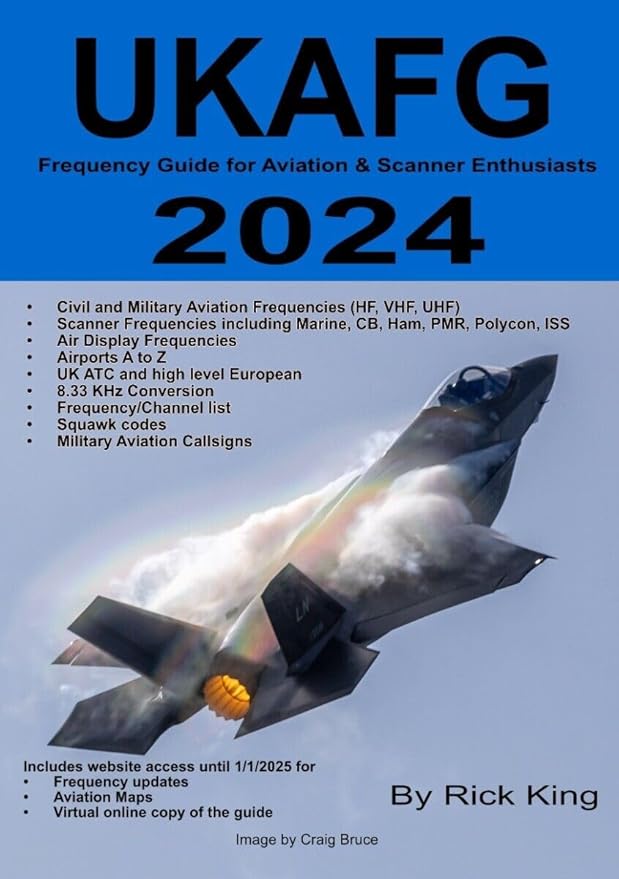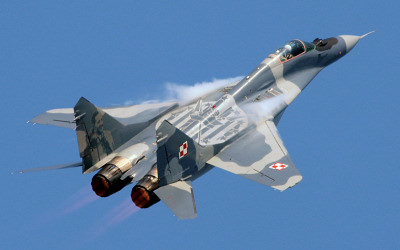Many handheld Air-band radios/scanners are available today costing from just a few pounds to several hundred pounds. The cheaper air-band radio is usually able to pick up transmissions from civilian aircraft but are limited by the absence of accurate tuning so you have little idea of what frequency you are listening to and you are often tuned into more than one frequency at the same time.
A scanner, while more costly (about £70 and more), usually consists of a keypad to enter a particular frequency, LCD display, a memory which will remember stored frequencies, and the ability to scan through a certain set of frequencies. There isn't any frequency overlap that you get on the cheaper Air-band radio. You can get either a hand-held scanner, ideal for air shows etc, or a larger desk top/base station model.
The cheaper scanners can receive just the VHF aircraft band (108-137MHz) which is ideal if you want to listen to civilian aircraft transmissions. More expensive models allow you to receive the UHF aircraft band (225-400MHz) in addition to the VHF aircraft band. These scanners can receive military aircraft transmissions as well as civilian. In order to listen to the Red Arrows leader at an air show you would require the UHF band.
Both VHF and UHF are short range, line-of-sight radio transmissions which are restricted to a maximum range of about 200 miles due to the curvature of the earth and usually considerably less depending on the surroundings (hills etc). Some scanners can receive the HF (short wave) aircraft band in addition to the VHF and UHF aircraft bands. The HF band is not restricted to line-of-sight radio transmissions and can be used to monitor Shanwick and the trans-Atlantic routes etc. There are also multi-band scanners which cover much more than just the aircraft bands.
Using a handheld scanner:
A handheld scanner usually includes a belt-clip and wrist-strap for convenience. It is powered by normal or rechargeable batteries and includes a speaker, earphone jack, and detachable antenna.
The scanner may have a keypad for manually entering frequencies or you may be able to connect it to a computer for programming in the frequencies. The frequencies that are entered into the scanner's memory are usually organised into 'Banks' and 'Channels'.
A scanner includes a 'Squelch' control which is used to eliminate background noise. There is also an AM and FM 'Mode' and for aircraft reception you should use AM only.
Some more expensive scanner models have many additional functions which makes them quite complicated to use especially as the included instructions are sometimes a bit vague. More information on your scanner can usually be found on the Internet following a Google search.
Recently the spacing between airband frequencies has been reduced from 25KHz spacing to 8.33KHz spacing. This has been done to increase the number of frequencies available. Newer scanners may be equipped to deal with 8.33KHz spacing but it is a good idea to check before buying. At the moment, commercial aircraft use the new 8.33KHz spacing but the military still use the older 25KHz steps.
Using a scanner at Airshows:
A scanner can be invaluable at an air show for listening to the tower and hearing what is going on. You will hear the pilot talking to the tower and know exactly when a display aircraft is to take-off, ideal if you want to be in the right place at the right time to get that photograph.
The airshow frequency (Tower) can usually be received on the civilian VHF aircraft band and will most likely be a 'Common Air Display Frequency' which is temporarily used for the duration of the airshow. They may also use the usual Tower frequency for that particular airfield. If you see a stall at the airshow selling airband scanners and accessories then they may display a list of frequencies being used or will help you.
If you want to listen in to a military air display team such as the Red Arrows then you will need a scanner that receives the UHF aircraft band. You will here the Red Arrows leader barking his commands to the other Red Arrows pilots.
Actually listening to aircraft frequencies on VHF/UHF/HF air bands in the UK is
illegal but actually owning and using a scanner for licensed broadcasts (Citizens Band, Amateur, licensed broadcast radio, weather and navigation broadcasts) is okay, but the authorities usually aren't concerned with people using them at air shows. If you go to a UK airshow you will see many people using air-band scanners but it is advisable to be discrete when using a scanner by using an earpiece and not having the scanner blasting out. Please do not bring a transceiver to an airshow as it could be very dangerous. When visiting air shows in other countries then it is advisable to check their laws to see if using a scanner is acceptable.
Aircraft Trackers:
You can also track an aircraft on your computer or smartphone while using your scanner to listen in. A tracker will display the aircraft on a map and supply lots of information such as aircraft type, airline, where it took off, its destination, altitude and speed. Below are a few trackers (Civilian & Military aircraft):
• Flight Radar 24.
• Plane Finder.
• ADS-B Exchange / Global Radar View (military).
• Plane Finder Free App (Android).
• Plane Finder Free App (IOS).
Amazon paid Link

MoonRaker UKAFG UK Airband Frequency Guide







